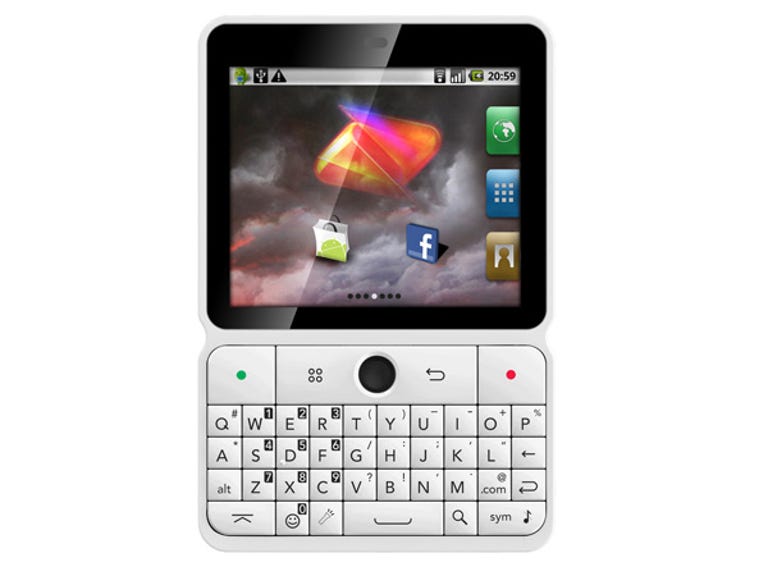 Why You Can Trust CNET
Why You Can Trust CNET Boost Droid review: Boost Droid
The Boost Droid has excellent features matched with good everyday performance, but will disappoint those looking to play games or takes photos with their phone.
Design
Though it's built from cheap-looking plastic parts, the Boost Droid is designed perfectly for the task at hand, or in hand as the case may be. Its 2.6-inch screen is positioned in a landscape orientation, leaving plenty of space for a full QWERTY keyboard without the phone becoming too tall. There's a 3.5mm headphone socket on the base of the handset, a microUSB port for charging and a 3-megapixel camera on the rear.
The Good
The Bad
The Bottom Line
The keyboard is reasonably well designed too; its keys are a touch on the small side, but they are raised bumps to help you find them faster. It's a bit pokey when trying to combine two keystrokes for keyboard shortcuts, but we do like the extra additions, like the dedicated flashlight key.
The screen is touch-sensitive, as it is with all Android phones, and manufacturer Huawei has opted for resistive touchscreen technology in this model. While this means you will need to apply some pressure when making selections — and you'll notice this most when swiping between the homescreens — we've found it to be fairly responsive overall. It's a shame that the screen itself doesn't look great. The viewing angle on the Boost Droid is very poor, making the image weak when viewed from very subtle angles.
Features
This is where the Boost Droid is most impressive. For the a quarter of the price of some of this year's smartphones, the Boost Droid delivers fast web browsing with an HSDPA connection to the network, Wi-Fi for when you're browsing at home, GPS for Google Maps and Bluetooth for pairing the phone to a headset or other Bluetooth-compatible device.
With these hardware components you can make best use of the pre-installed software, most notably the Google Apps suite, comprised of GMail, Calendar, Google Maps and the Android Market. Boost Mobile also include a 1GB microSD card in the box with the phone with over 20 apps selected by the team at Boost Mobile.
On top of these standard Android offerings, there are a couple of cool custom apps as well. Our review unit has an app called RichPad which is similar to a basic notepad app with the addition of a Paint Note option, letting you draw your reminders rather than type them. There's also an app that turns your phone into a wireless hotspot, letting you share your 3G data with a laptop over WiFi.
Performance
When performing basic everyday tasks, the Boost Droid is a decent little computer. You certainly won't be surprised by any part of its operation, and we discovered some lag when accessing apps with lots of data, like an address book, but it will get the basics done with little fuss. We were disappointed, but not surprised, when we installed Angry Birds and saw this Droid struggled to get passed the loading screen.
The 3-megapixel camera is as expected in a AU$150 mobile phone. The photos are a tad colourless and the focus requires some very steady hands — there's nothing too surprising here. We did notice that using the camera is one of the keys areas where you'll likely struggle with the poor viewing angles on the Boost Droid's screen. Trying to compose a shot of your baby niece is made more difficult when you can't see anything onscreen.
Overall
If your fingers are small enough to navigate the tiny keyboard, if you don't mind the mildly disappointing screen and camera and you can find a use for a phone with a great web browser and access to apps, the Boost Droid will do you proud. That said, if you can live without the Droid's QWERTY keyboard we urge you to take a look at the Huawei IDEOS. For AU$10 more you'll get a slightly faster phone with a better screen.


